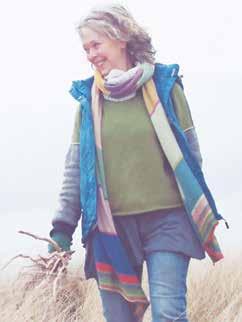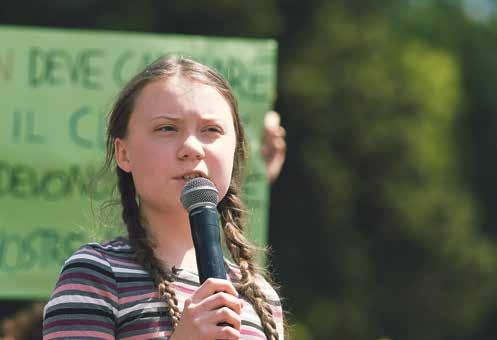
3 minute read
BRIGIT STRAWBRIDGE
Brigit Strawbridge Howard on Rediscovering Nature
by April Thompson
Bee advocate, wildlife gardener and naturalist Brigit Strawbridge Howard was alarmed the moment she realized she knew more about the French Revolution than the native trees around her. Howard’s realization that she had lost touch with the natural world led her on a journey deep into the fascinating world of honeybees, bumblebees, and the often unsung superpollinator solitary bees, chronicled in her book Dancing with Bees: A Journey Back to Nature. Howard writes, speaks and campaigns to raise awareness of the importance of native wild bees and other pollinating insects. She lives in North Dorset, England, with her husband, Rob, where they love to bee-watch in their backyard garden.
What first piqued your interest in bees? Initially, apocalyptic headlines about bee decline and colony collapse with female worker bees leaving hives and not coming back alarmed me from a human food chain perspective. It happened to be around the time I realized I had completely lost touch with the natural world I so loved as a child. I started looking for bees and became completely immersed in their world; the more I watched them, the more I lost track of time and the more questions I had. I also began to more worry about the bees themselves than about their decline’s effect on us. Bees have been a portal to the natural world for me. It happens when many people get interested in a specific species because everything is interconnected, and you start to notice the whole web of life.
What makes bees distinct from other kinds of insects? Bees go out specifically to collect pollen and nectar to feed their larvae; other insects eat pollen and are important pollinators, but don’t collect it for their young. They also tend to visit the same flower species again and again, which other pollinators don’t always do.
How has your study of bees affected you personally? I dropped out of school as a teenager. Bees are the only thing I’ve truly ever studied; I am self-taught in insect biology and ecology. I have read scientific papers that I would have never thought were for the likes of me in my quest to understand more about bees.
Also, when I feel overwhelmed with life, because of my interest in bees I have something else to focus on. I can lose hours and hours walking in the woods and totally forget my problems. I have learned to tune into the tiny things, the fungi and miniscule plants I would have otherwise walked past.
What is one of the most interesting aspects of bee behavior?
and seeing if I could recognize them by their buzzes. Bumblebees have a deep booming buzz, for example, and I recognized this, but suddenly it changed to a high-pitched sound like a dental drill. I opened my eyes, and it was a bumblebee going round and round the sides of a Welsh poppy, sounding really frantic and having a pollen bath. As it turns out, she was sonicating, otherwise known as buzz foraging. This is how bees pollinate tomatoes. A lot of flowers don’t give up pollen easily, but the bumblebee knows exactly what to do. It grasps the flower and continues to vibrate without moving its wings. This produces high-frequency vibrations that trigger the tomato flower to open and explodes pollen out onto the bee.
What are a few ways that we can help support bee populations? Maintain gardens, backyards and balconies with a variety of nectar-rich plants and create habitat for bees to nest in. Plant flowers that will bloom in succession. Stop using pesticides, insecticides and other chemicals, because the bees are taking that cocktail of chemicals back to the hive or nest, and collectively they are more dangerous than the sum of their parts. Also, dare to be less tidy in your garden; grow wildflowers and let flowering weeds like clover and dandelions be. Watch and see what comes. It won’t just be the bees: If we get it right for the bees, it spirals out to other species.
It’s never too late to reconnect and find the curiosity and awe that you experienced as a child. It was bees that captured my attention and imagination; for someone else it may be something else, but if you make time to stop, sit and look around you, you will find the wonder in nature.








